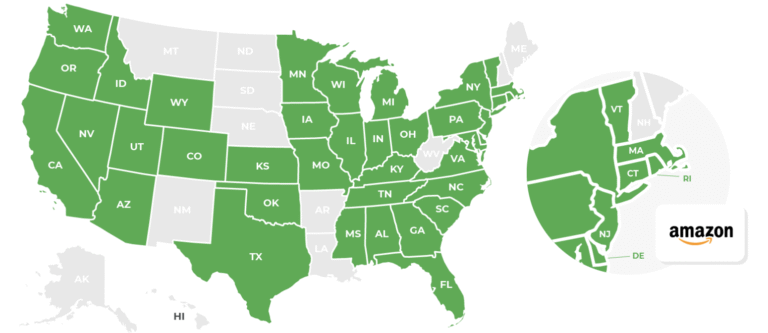Amazon Liquidation Warehouse Near Me: Top 15 Places
With the rise of eCommerce and massive product returns, Amazon liquidation warehouses have exploded in popularity.
These aren’t just dusty, back-of-the-building storage rooms—they’re treasure troves filled with brand-name items, customer returns, overstocked goods, and shelf-pulls at up to 90% off retail prices.
If you’ve ever Googled “Amazon liquidation warehouse near me,” you’re not alone. Whether you’re a reseller looking to flip goods on eBay or just a savvy shopper hunting for unbeatable deals, liquidation warehouses offer a goldmine of opportunity—if you know where to look and what to expect.
Before you jump in, Read This Review Before You Buy—because not all warehouses are created equal, and some deals are too good to be true. In this guide, we’ll uncover the best local options, tips for sourcing, how to avoid scams, and how you can turn liquidation pallets into real profit.
Let’s dive into the world of Amazon liquidation!
Table of Contents
1. What is an Amazon Liquidation Warehouse?
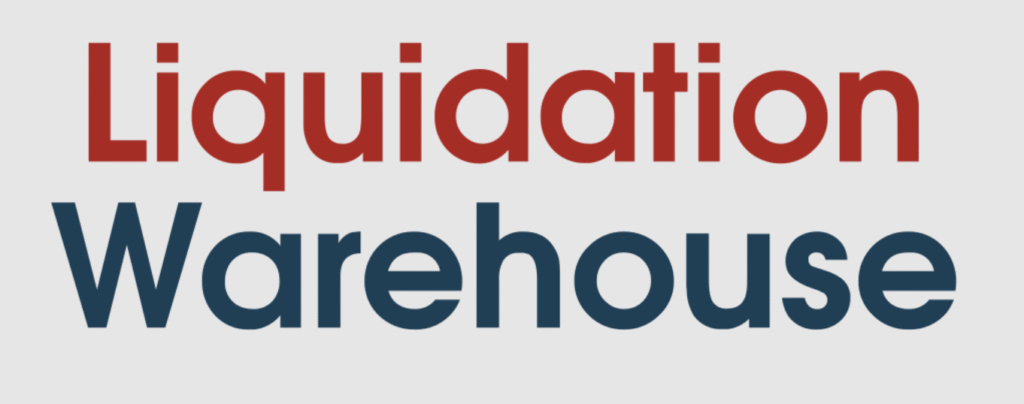
An Amazon liquidation warehouse is a facility that sells excess Amazon inventory, including customer returns, shelf-pulls, overstocked products, and damaged packaging items. These items are often sold at steep discounts—either individually or by the pallet.
How It Works:
Amazon, like most big-box retailers, can’t afford to restock every return or overstocked item. So, they partner with third-party liquidators or operate through wholesale outlets to offload this inventory in bulk. That’s where you come in.
You can purchase:
- Individual products at discounted rates
- Pallets of goods (contains 50–100+ items)
- Truckloads (for large-scale resellers)
These warehouses may be Amazon-owned, Amazon-partnered, or completely independent businesses that acquire their stock from Amazon liquidation channels.
Pro Tip: Most liquidation warehouses do not guarantee the condition of every item—always expect some risk.
2. Why Buy from Amazon Liquidation Warehouses?
You might be asking, “Is this really worth it?” The short answer: yes—if you know what you’re doing. Buying liquidation products can be incredibly profitable, especially for side hustlers, full-time flippers, and even everyday shoppers.
Top Benefits:
- 💰 Huge Discounts: Items are typically 40–90% below retail prices
- 🎯 Variety: From electronics and toys to clothing and home goods
- 🔁 Resale Potential: Great for selling on eBay, Facebook Marketplace, Mercari, and Poshmark
- 🔧 DIY Repair Value: Many returned items work fine or only need minor fixes
- 📦 Bulk Inventory: Pallet buying gives you volume at low per-unit costs
Use Cases:
- Launching a small eCommerce business
- Stocking a brick-and-mortar discount store
- Holiday or event-based bargain shopping
- Building a flipping side hustle
Real Example: A reseller in Atlanta purchased a $400 pallet of electronics and flipped it for over $1,200 within a week on eBay and OfferUp.
Pro Tip: Start small to test the process. Buy one or two pallets before scaling.
3. How Do Amazon Returns & Liquidations Work?
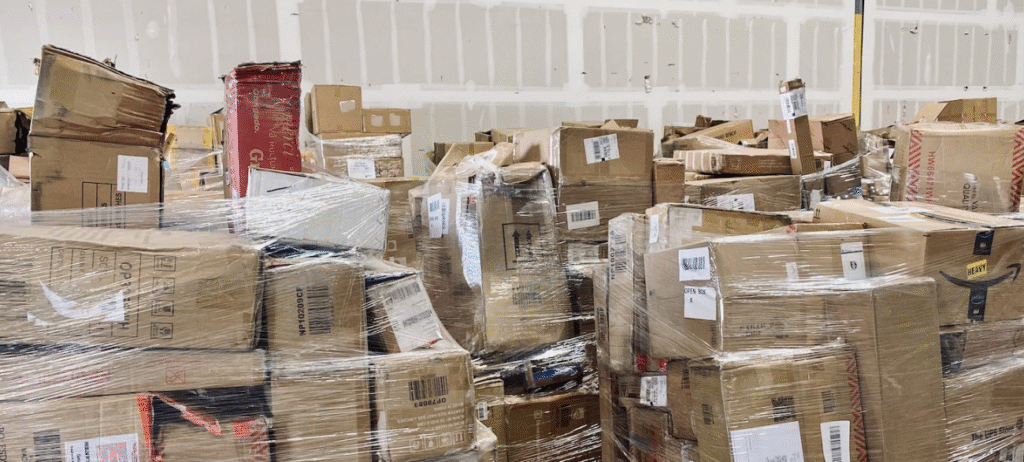
The Amazon return rate is estimated to be over 30% during peak shopping seasons. That’s billions of dollars in returned products annually. Instead of restocking, Amazon sends these goods to liquidation warehouses and online auction platforms.
Types of Amazon Liquidation:
- Customer Returns: Products that were opened or lightly used
- Overstock: New items Amazon couldn’t sell before a season change
- Shelf Pulls: Unpurchased items pulled from Amazon FBA inventory
- Box Damage: Brand-new products in ripped or damaged boxes
Liquidation Tiers:
- Grade A: New, unopened
- Grade B: Used but working
- Grade C/D: Damaged or incomplete
You can buy by condition, depending on your risk tolerance and budget.
Pro Tip: Some warehouses allow you to inspect pallets before buying. Take advantage if you can visit in person.
4. Types of Liquidation Inventory You Can Find
The selection at Amazon liquidation warehouses is incredibly diverse. You might find a Dyson vacuum next to an iPad, a pair of Nikes, and a blender—all in the same pallet.
Popular Categories:
- 🖥️ Electronics: Speakers, headphones, tablets, game consoles
- 👟 Apparel & Shoes: Brand-name fashion, athletic wear
- 🛋️ Home & Kitchen: Coffee makers, vacuum cleaners, décor
- 🎮 Toys & Games: Perfect for seasonal flipping
- 🔧 Tools & Hardware: Great resale value, especially cordless drills and tool kits
- 🧴 Health & Beauty: Skincare, haircare, and grooming kits (unopened)
Condition Varies:
You’ll find a mix of:
- Brand-new items
- Lightly used returns
- Items missing manuals or accessories
- Defective or broken goods (these go cheap)
Pro Tip: Stick with electronics, appliances, and tools for the best profit-to-risk ratio.
5. Top Online Platforms to Locate Liquidation Warehouses Near You
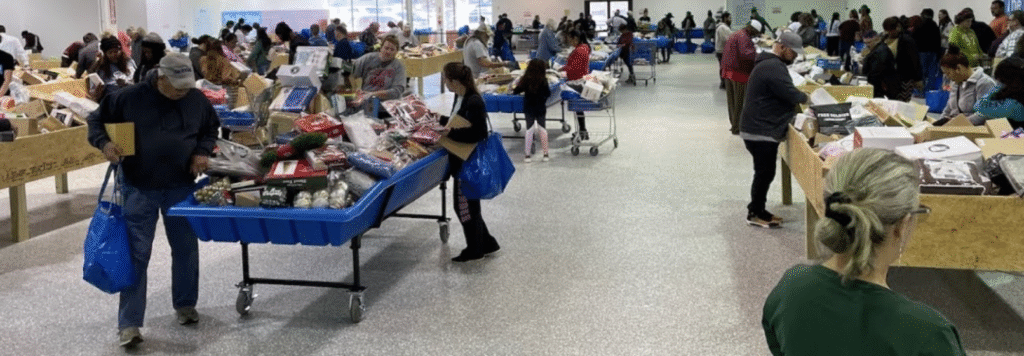
If you’re not sure where to find Amazon liquidation warehouses, start online. Several major platforms can help you locate nearby deals or even ship pallets directly to your home.
1. B-Stock
- Amazon’s official liquidation partner
- Auction-based model
- Filter by region, item category, and shipping options
2. Liquidation.com
- Massive inventory of Amazon, Walmart, and Target returns
- Pallet and truckload options
- Inspection details included
3. Direct Liquidation
- Verified sellers and consistent pallet availability
- Shipping arranged for you
- Ideal for beginners
4. BlueLots
- No auctions—fixed pricing
- Only curated, high-quality pallets
- Inventory moves fast
5. 888 Lots
- Amazon FBA sellers love this one
- Individual item listings or pallets
- Detailed manifests and margin calculators
Pro Tip: Join email alerts or Telegram groups from these platforms—they often share flash deals and overstock events.
6. Top 15 Amazon Liquidation Warehouses in the U.S.
While online platforms dominate the liquidation scene, physical Amazon liquidation warehouses are thriving across the U.S.—especially in major metro areas. These warehouses let you inspect goods in person, avoid shipping fees, and even negotiate directly with sellers.
Here’s a curated list of the top 15 liquidation warehouses across the country:
East Coast:
- Quicklotz (Charlotte, NC): Massive warehouse with in-person shopping, pallets, and truckloads.
- 888 Lots (Linden, NJ): Offers Amazon returns and FBA inventory; appointment required.
- Restock Wholesale (Miami, FL): Sells Amazon and Target returns—lots of electronics and home goods.
Midwest:
- Midwest Liquidators (Indianapolis, IN): Known for fair pricing and good electronics.
- Krazy Binz (Dayton, OH): Daily discount bin model—prices drop every day of the week.
- The Bin Store (Evansville, IN): Amazon returns and overstock sold by the piece or pallet.
South:
- Barton’s Discounts (Indianapolis, IN): One of the best-known Amazon pallet sellers with great variety.
- Discount Wholesalers Inc. (Dunn, NC): Offers a wide range of truckloads and pallet sales.
- Big D Liquidation (Dallas, TX): Solid inventory rotation with furniture and electronics.
West Coast:
- Warehouse One (Los Angeles, CA): Popular for Amazon FBA return pallets.
- Quicklotz (Laredo, TX): Main warehouse with thousands of pallets ready to ship.
- The Liquidation Team (Las Vegas, NV): Good mix of Amazon and Walmart overstock.
National Chains with Multiple Locations:
- Bin Crazy: Found in several states; offers Amazon bins and weekly pallet drops.
- Crazy Hot Deals: Midwest-based but expanding—great for individual buyers.
- We Bargain: West Coast chain offering $5 bin deals and full pallets.
Pro Tip: Always call or check the warehouse’s social media page before visiting—they often post their new arrivals and sale days.
| Warehouse Name | Location | Specialty | Visit Type | Website / Info |
|---|
| Quicklotz | Charlotte, NC / Laredo, TX | Amazon pallets, bin shopping | In-person / Online | quicklotz.com |
| 888 Lots | Linden, NJ | Amazon FBA returns, electronics | Appointment Only | 888lots.com |
| Restock Wholesale | Miami, FL | Amazon & Target returns | Walk-in / Local | restockwholesale.com |
| Midwest Liquidators | Indianapolis, IN | Electronics, household goods | Walk-in | N/A (Local Business) |
| Krazy Binz | Dayton, OH (Multiple) | Daily drop pricing on Amazon items | In-person | krazybinz.com |
| The Bin Store | Evansville, IN | Amazon returns & general merchandise | Walk-in | thebinstore.com |
| Barton’s Discounts | Indianapolis, IN | Pallets, truckloads, electronics | Walk-in / Wholesale | bartonsdiscounts.com |
| Discount Wholesalers Inc. | Dunn, NC | Amazon truckloads & small lots | Pickup / Freight | discountwholesalersinc.com |
| Big D Liquidation | Dallas, TX | Furniture, electronics, tools | Walk-in | N/A (Facebook-based) |
| Warehouse One | Los Angeles, CA | Amazon FBA returns, home & kitchen | In-person | N/A (Local listing) |
| The Liquidation Team | Las Vegas, NV | Mixed pallets, Amazon & Walmart stock | Walk-in | theliquidationteam.com |
| Bin Crazy | Multiple States | $5/$10 bins, Amazon daily deals | In-person | bincrazy.com |
| Crazy Hot Deals | Midwest (expanding) | Bin shopping and pallet deals | Walk-in | crazyhotdeals.com |
| We Bargain | West Coast (multiple) | Amazon returns, fixed price bins | In-person | webargain.com |
| Quicklotz (HQ) | Laredo, TX | Mega warehouse & online orders | Walk-in / Online | quicklotz.com |
7. Tips for Finding Local Amazon Liquidation Warehouses
If none of the above options are near you, don’t worry. You can still find great local deals by searching smart and using a few insider tricks.
Where to Start:
- 🔍 Google “Amazon liquidation warehouse near me”
- 📱 Facebook Marketplace: Search “Amazon pallets,” “liquidation sale,” or “return pallets”
- 🖥️ Craigslist & OfferUp: Local resellers often list pallets for sale
- 📍 Yelp & Google Maps: Use business directories to find nearby bin stores or discount depots
Social Media Groups:
- Join Facebook groups like “Amazon Pallets for Sale USA” or “Liquidation and Wholesale Deals”
- Many warehouse owners post new pallet photos and deals daily
- DM sellers directly for appointments or questions
Red Flags to Avoid:
- No photos or vague descriptions
- No business address or verified presence
- No returns or inspection allowed
- “Too good to be true” pricing
Pro Tip: When in doubt, visit the warehouse in person before purchasing a large order. A reputable seller will let you browse or at least show you photos and manifests.
8. How to Buy Amazon Liquidation Pallets
Once you’ve found a warehouse or online platform, here’s how to navigate your first purchase like a pro.
Step-by-Step Buying Process:
- Register for an Account: Platforms like B-Stock require you to sign up as a business buyer.
- Choose a Product Category: Electronics, home goods, clothing, toys, etc.
- Browse Listings: Check manifest details (item counts, condition, MSRP)
- Place a Bid or Buy Now: Some platforms are auction-based; others offer instant purchasing.
- Arrange Shipping or Pickup: You can pick up locally or pay for freight delivery.
- Inspect & Resell: Clean, test, and repackage goods for resale.
Key Tips:
- Stick to known categories you understand (e.g., if you’re into tech, don’t buy clothing)
- Always factor in shipping costs before bidding
- Start with 1–2 pallets to learn the ropes
Pro Tip: Avoid unmanifested pallets unless you’re prepared for surprises. Always request a manifest or box content sheet if possible.
9. Risks & Challenges in Buying Liquidation Stock

Buying from liquidation warehouses is profitable—but not risk-free. Knowing the downsides helps you avoid costly mistakes.
Common Risks:
- ❌ Damaged or non-functional items
- ❌ Missing accessories (chargers, manuals, cords)
- ❌ High shipping fees for heavy pallets
- ❌ Returns or refunds often not allowed
- ❌ Pallets with low resale value items
How to Mitigate These Risks:
- Buy manifested pallets with detailed item lists
- Inspect in person if possible
- Stick to platforms with buyer protection or trusted reviews
- Start small and scale once you find trustworthy suppliers
Pro Tip: Always plan for 10–20% of the pallet to be unsellable or below-par. That’s normal in the liquidation game.
10. Best Items to Resell from Liquidation Pallets
Not all liquidation items are created equal. Some categories offer great resale potential and strong profit margins, while others are best avoided.
🔝 Top Categories to Flip:
- Electronics: Bluetooth speakers, headphones, routers, tablets
- Home Appliances: Coffee machines, air fryers, vacuum cleaners
- Fashion & Apparel: Name-brand sneakers, jackets, accessories
- Power Tools: Drills, toolkits, pressure washers
- Toys & Seasonal Goods: Especially before holidays
🚫 Categories to Be Cautious Of:
- Open cosmetics or hygiene items
- Low-quality fashion with no tags or branding
- Outdated tech (DVD players, old printers)
- Heavy furniture (high shipping costs)
Pro Tip: Aim for categories where you can test functionality, bundle items, or resell fast on eBay, Mercari, or local marketplaces.
11. Should You Use a Sourcing Agent for Liquidation?
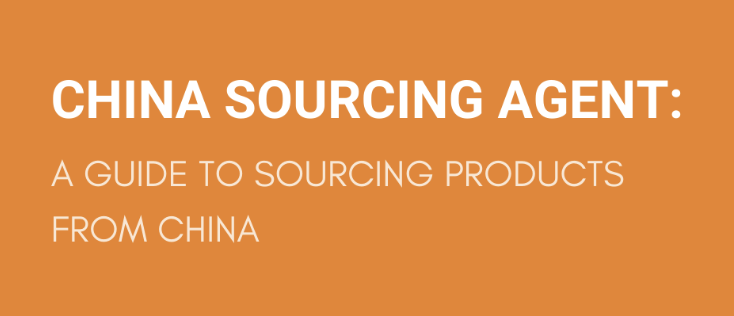
You might think sourcing agents are only for international imports—but they can be incredibly helpful in liquidation deals, too. If you’re buying pallets for resale and don’t have time or know-how to evaluate inventory, an agent can manage the heavy lifting.
When a Sourcing Agent Makes Sense:
- You’re buying multiple pallets at once
- You live outside the U.S. and need a consolidation point
- You want someone to inspect pallets, negotiate better rates, or filter out junk stock
- You’re scaling your resale operation and can’t inspect every deal personally
How Simoosourcing Can Help:
Though traditionally known for helping importers source from 1688.com or Keqiao, Simoosourcing also supports liquidation buyers with:
- Inspection services: Get real-time reports on item condition
- Consolidation & packaging: Combine multiple pallets or items into one shipment
- Custom sourcing: Find high-margin categories for resale
- Logistics coordination: Plan cost-effective delivery to your warehouse or FBA center
Pro Tip: If you’re an Amazon or eBay seller buying regularly, outsourcing your sourcing and QC tasks to a reliable partner like Simoosourcing can save hours of work and thousands in bad purchases.
12. How to Inspect a Liquidation Pallet Before Buying
When buying liquidation items, especially in person, visual inspection is everything. You’re not just checking if the pallet is full—you’re verifying condition, brands, item categories, and possible resale value.
What to Look For:
- 📦 Packaging Condition: Is it original, resealed, or missing?
- 💡 Visible Damage: Broken screens, cracked parts, bent boxes?
- 📋 Brand Labels: Are there recognizable brands (Sony, Nike, Cuisinart)?
- 🔋 Electronics: Look for missing chargers or accessories
- 🔍 Duplicates: Too many of the same item could be hard to sell
Red Flags:
- No manifest or product list provided
- Pallet is shrink-wrapped with zero visibility
- Seller discourages you from opening boxes
- Pricing seems too good to be true
Pro Tip: Bring a flashlight and box cutter. Carefully open a few boxes to inspect, then reseal if you choose not to buy. Respect warehouse rules but never buy blind unless you’re getting the pallet at a steep discount.
13. Local Auction Houses vs Online Warehouses
Liquidation buyers often ask: Is it better to buy from a local auction or an online marketplace? The answer depends on your budget, time, and risk tolerance.
Local Auction Houses – Pros:
- Inspect items in person
- Local pickup = no shipping costs
- Chance to win items at below-market prices
Cons:
- Limited selection
- Bidding wars can drive prices up
- No guarantees or returns
Online Liquidation Warehouses – Pros:
- Massive inventory across multiple categories
- Convenient browsing & shipping
- Access to manifests and support
Cons:
- Must pay for shipping
- Can’t inspect items personally
- Some platforms have strict terms & no refunds
Pro Tip: Try both. Use local auctions for quick flips and online platforms for specialty or high-value pallets you’ve researched thoroughly.
14. Are Liquidation Warehouses Legit?
This is one of the most searched questions online—and with good reason. The boom in resale has led to a surge in fake “pallet flipping” schemes. But yes, many liquidation warehouses are absolutely legit—if you know how to spot them.
How to Identify a Legit Warehouse:
- Physical address & business registration
- Consistent reviews on Google, Yelp, and Facebook
- Active social media pages with real-time inventory
- Transparent policies (returns, no returns, shipping details)
Red Flags of a Scam:
- Payment only via apps like Zelle or CashApp
- No photos of pallets or vague descriptions
- Refusal to show manifest or allow inspection
- Unrealistic pricing (“iPhone pallet for $100!”)
Top Verified Sources:
- B-Stock
- Liquidation.com
- Direct Liquidation
- Quicklotz
- 888 Lots
Pro Tip: Always verify a seller’s business info and read recent customer reviews. If it feels shady, walk away—there are plenty of reliable sellers out there.
15. How to Build a Business Reselling Liquidation Goods
Reselling liquidation stock isn’t just a hustle—it can become a profitable full-time business. Many sellers scale from buying a single pallet to running a six-figure operation within a year or two.
Steps to Start:
- Buy One Pallet: Start small, test your sourcing and resale strategy
- Choose Your Platform: Sell on eBay, Facebook Marketplace, Amazon, or your own Shopify store
- Track Margins: Use spreadsheets or inventory software to track COGS, profits, returns
- Reinvest Wisely: Use profits to buy more pallets or diversify into new categories
- Outsource Scaling: Use agents, VAs, or fulfillment services as you grow
Tools That Help:
- InventoryLab (for Amazon sellers)
- Vendoo or List Perfectly (cross-listing on marketplaces)
- QuickBooks or Wave (for financials)
Pro Tip: Build an audience! Create a TikTok or YouTube channel showing your unboxings, flips, and profit breakdowns—it can bring you sales, partnerships, and credibility.
Comparison Table of Liquidation Sources
Here’s a quick comparison of some of the top liquidation platforms and local warehouses to help you choose the best fit based on your goals and preferences:
| Source | Type | Inspection Available | Shipping Options | Best For | Pricing Model |
|---|---|---|---|---|---|
| B-Stock | Online Auction | No | Yes (Freight) | Amazon FBA & bulk buyers | Auction |
| Liquidation.com | Online Auction | Sometimes | Yes (Freight) | Variety of categories | Auction |
| Direct Liquidation | Online & Local | Yes (some locations) | Yes (Nationwide) | Mixed pallets & returns | Auction & Fixed |
| 888 Lots | Online | No | Yes | Amazon sellers needing UPCs | Fixed |
| Quicklotz | Physical & Online | Yes | Yes (U.S. & Global) | Local pickup & bin shopping | Fixed & Auction |
| Facebook Marketplace | Local Seller | Yes | Local pickup | Individual resellers & flippers | Negotiable |
| Craigslist | Local Seller | Yes | Local pickup | One-off pallets | Negotiable |
| Restock Wholesale | Physical | Yes | Yes (some areas) | Miami-based sourcing | Fixed |
Pro Tip: Use fixed-price platforms like Quicklotz or 888 Lots for predictable profits, and auction sites like B-Stock or Liquidation.com if you’re comfortable with competitive bidding.
Pros & Cons of Buying from Liquidation Warehouses
Understanding both the advantages and challenges of liquidation sourcing will help you decide if it’s the right business model or side hustle for you.
✅ Pros:
- Massive Discounts: Often 40–90% off retail pricing
- Inventory Variety: Access to top brands across every category
- High Resale Potential: Flip on eBay, Poshmark, Amazon, or locally
- Low Startup Cost: You can start with just one pallet
- Fast Cash Flow: Resale products can move quickly with proper marketing
❌ Cons:
- Inconsistent Quality: Some items may be damaged or incomplete
- No Returns: Most liquidation is sold “as is”
- Time-Intensive: Unboxing, testing, cleaning, and listing take work
- Shipping Fees: Pallets are heavy and cost to move
- Market Saturation: Popular platforms get competitive fast
Pro Tip: Track your ROI on every pallet and don’t fall into the trap of chasing low prices without knowing the true resale value.
Checklist Before Visiting or Ordering from a Warehouse
Before you jump in and order your first pallet, here’s a complete checklist to keep you focused and profitable:
✅ Pre-Buying Prep:
- Research the category you want to sell (electronics, clothing, etc.)
- Set a budget (including shipping costs)
- Choose a selling platform (eBay, Amazon, local)
- Find 2–3 trusted sellers or platforms to compare
📦 During Purchase:
- Ask for a manifest or product list
- Inspect the pallet in person if possible
- Look for brand-name items and working electronics
- Watch for red flags (sealed pallets with no visibility, vague descriptions)
🧾 Post-Purchase:
- Test, clean, and repackage items
- List items with clear photos and honest descriptions
- Track profits and reinvest into higher-value pallets
- Build long-term relationships with reliable suppliers
Pro Tip: Use a spreadsheet to log every item, its cost, resale value, and platform used. This will help you scale and avoid repeated mistakes.
Conclusion
Amazon liquidation warehouses are no longer an insider secret—they’re a booming channel for smart shoppers, side hustlers, and full-time entrepreneurs alike.
Whether you’re looking to save money, flip inventory, or start a resale business, these warehouses are the ultimate opportunity for 2025 and beyond.
But like any great opportunity, it comes with risks. That’s why it’s crucial to Read This Review Before You Buy. Understand how the system works, start with a reputable seller, and don’t be afraid to experiment and learn along the way.
And if you ever feel overwhelmed, sourcing partners like Simoosourcing can step in to simplify your process, inspect pallets, or even source custom goods tailored to your business.
So what are you waiting for? Your next profitable pallet may be just a zip code away.
FAQs About Amazon Liquidation Warehouses
1. Are liquidation pallets profitable?
Yes, many resellers make solid profits from liquidation pallets, especially in categories like electronics, tools, and branded apparel. Success depends on your sourcing skills and resale strategy.
2. Can I visit Amazon liquidation warehouses in person?
Absolutely. Many liquidation warehouses across the U.S. allow walk-ins or appointments. Some even host bin sales and offer daily deals.
3. What’s the average cost of a pallet?
Pallets range from $250 to $1,500 depending on size, category, and condition. Electronics and tool pallets tend to be more expensive but offer higher ROI.
4. How do I resell liquidation goods?
You can resell on platforms like eBay, Facebook Marketplace, Amazon, Poshmark, or via your own Shopify store. Each has its own audience and fees, so choose based on your product type.
5. Where do I find the best liquidation deals?
Start with platforms like B-Stock, Direct Liquidation, and 888 Lots. You can also find deals through local auctions, bin stores, and Facebook groups dedicated to liquidation sourcing.


